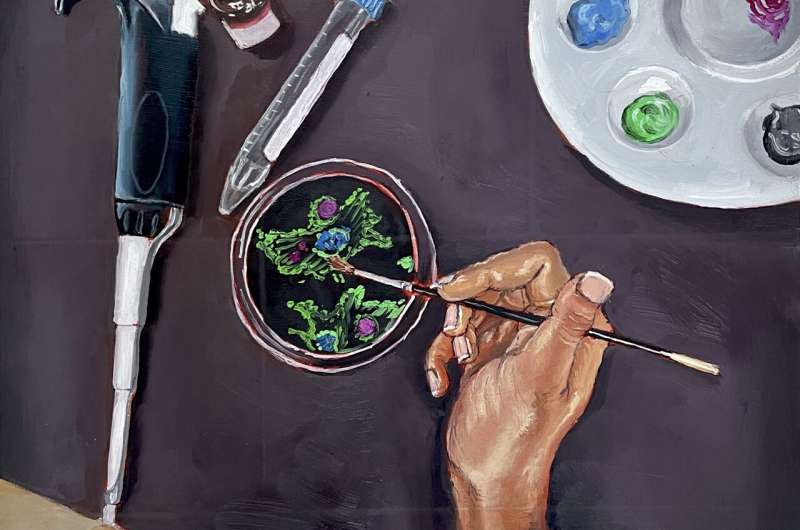When bad cells go good: Harnessing cellular cannibalism for cancer treatment
Originally published by University of California - Santa Barbara, on January 7, 2024
A Petri dish transforms into a canvas in Ph.D. student Hadley Hanson's painting of macrophages engulfing cancer cells. Credit: Hadley Hanson
Scientists have solved a cellular murder mystery nearly 25 years after the case went cold. Following a trail of evidence from fruit flies to mice to humans revealed that cannibalistic cells likely cause a rare human immunodeficiency. Now the discovery shows promise for enhancing an up-and-coming cancer treatment.
"This paper takes us from very fundamental cell biology in a fly, to explaining a human disease and harnessing that knowledge for a cancer therapy," said UC Santa Barbara's Denise Montell. "Each one of those steps feels like a major discovery, but here they are, all in one paper."
Researchers in Montell's lab published their findings in the Proceedings of the National Academy of Sciences and are now investigating the mechanisms and implications.


Comments
Post a Comment